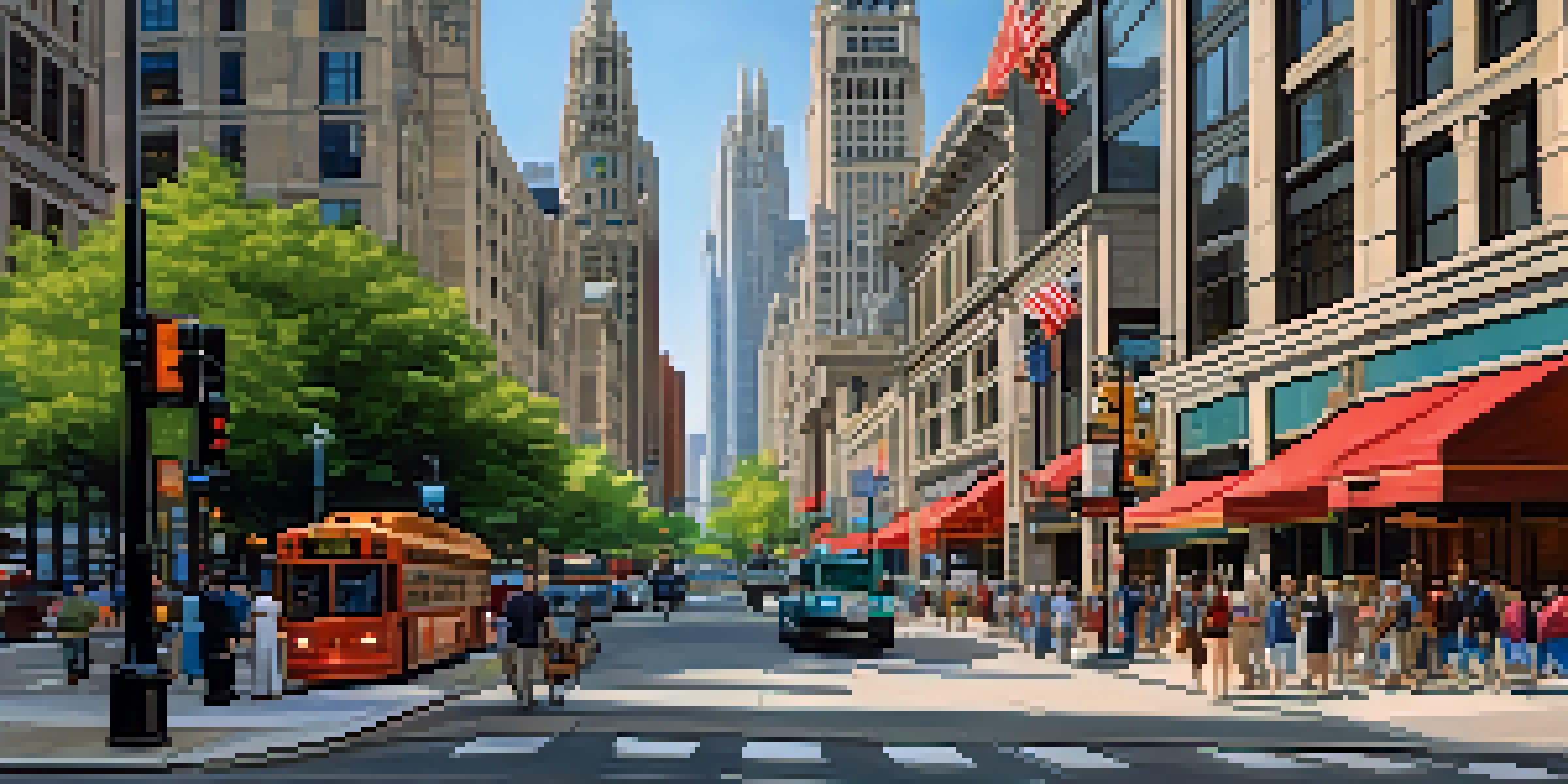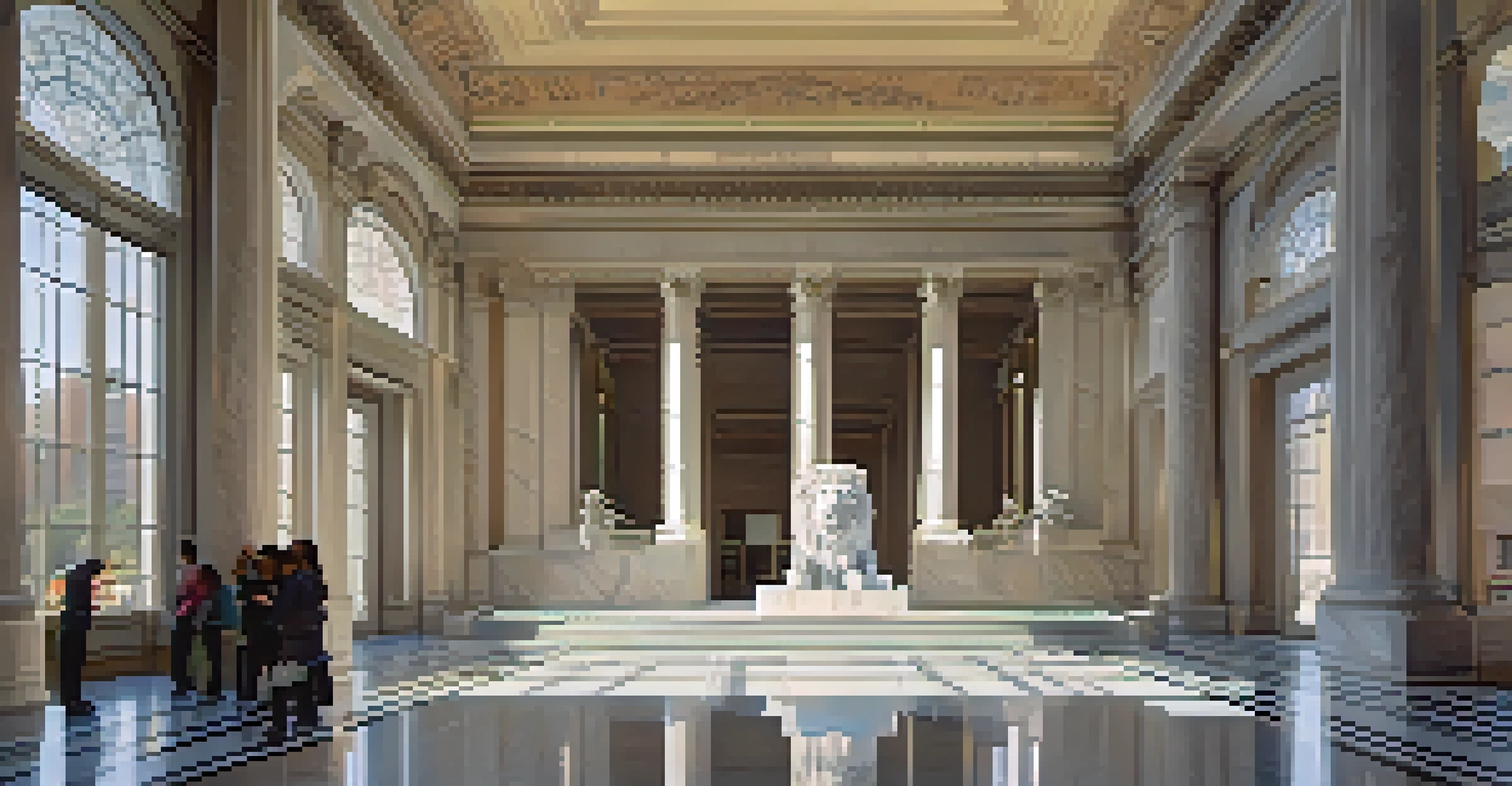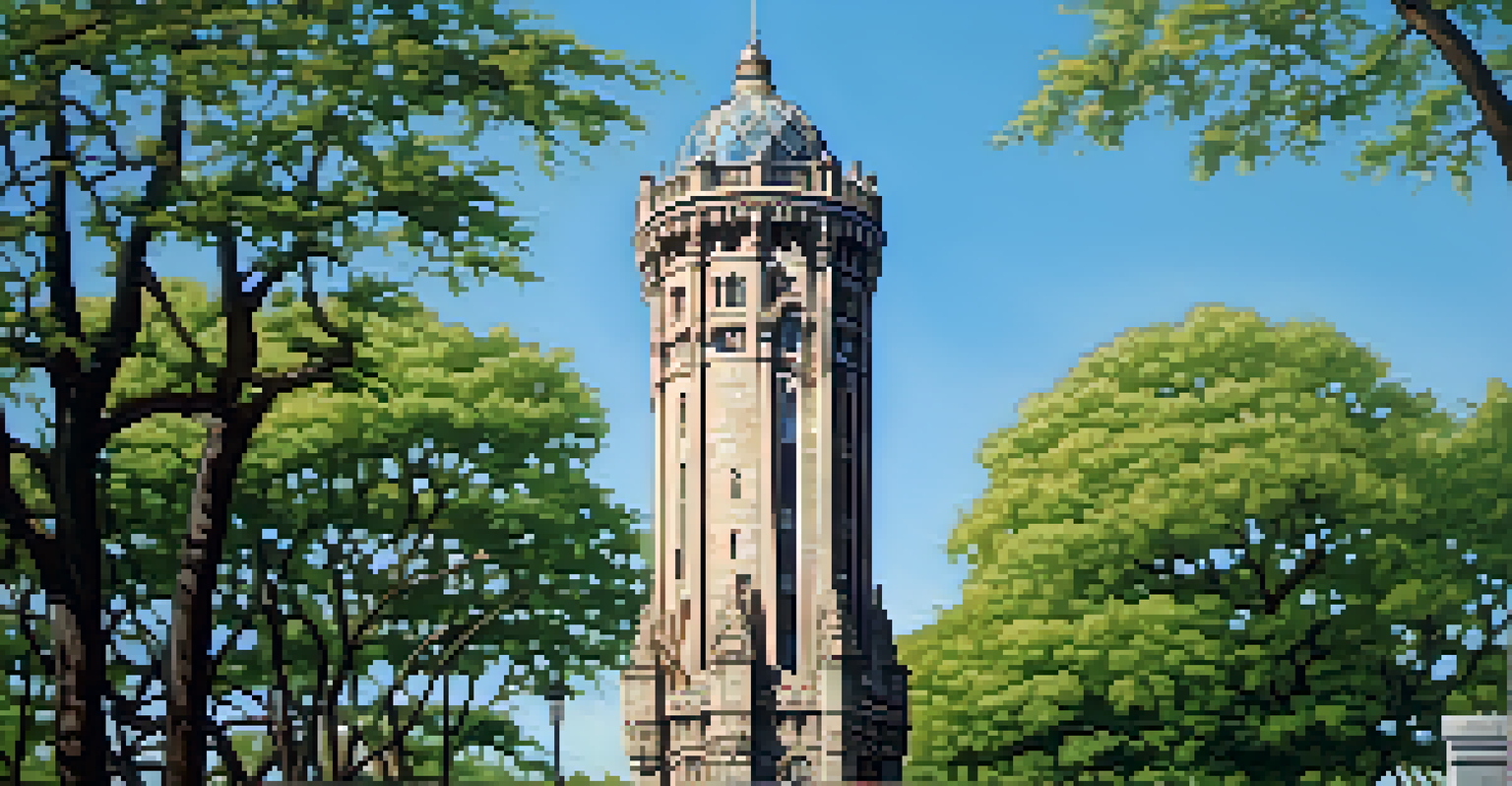Historic Buildings of Chicago: A Glimpse into the Past

The Magnificent Mile: A Historic Jewel of Chicago
The Magnificent Mile is not just a shopping destination; it’s a treasure trove of historic architecture. Walking along this iconic stretch, you’ll find buildings that tell the story of Chicago's growth from a small trading post to a bustling metropolis. Each structure, from the neo-Gothic Tribune Tower to the modernist designs of the John Hancock Center, contributes to the city's unique skyline and rich history.
Chicago is an October sort of city even in spring.
In the early 20th century, this area transformed into a vibrant commercial hub, attracting both locals and tourists alike. The juxtaposition of historic and contemporary buildings showcases Chicago’s architectural evolution over the decades. This blend of styles is what makes the Magnificent Mile not just visually stunning, but also a living history lesson.
Exploring the Magnificent Mile is like stepping back in time while remaining firmly planted in the present. As you stroll, take a moment to appreciate the craftsmanship and design that went into each building, reminding us of the ambitions and dreams of those who came before us.
The Art Institute of Chicago: More Than Just Art
The Art Institute of Chicago is renowned for its impressive collection of artworks, but its own building is a masterpiece worth exploring. Opened in 1893, the museum combines neoclassical architecture with modern additions, creating a space that is both grand and inviting. The iconic lion statues guarding the entrance are a beloved symbol of the city.

Beyond its beautiful façade, the institute has played a vital role in the cultural life of Chicago. It has hosted countless exhibitions and educational programs that have enriched the community. The building itself is a reflection of the city’s commitment to art and education, making it a historic landmark in more ways than one.
Chicago's Architectural Legacy
The Magnificent Mile showcases a stunning blend of historic and modern architecture that reflects Chicago's rich history and growth.
Visiting the Art Institute is not just about viewing art; it’s about experiencing the historical significance of the space. From the marble floors to the stunning galleries, every corner of the building tells a story of creativity and inspiration.
The Chicago Water Tower: A Symbol of Resilience
The Chicago Water Tower stands as a testament to the city’s resilience, having survived the Great Chicago Fire of 1871. This stunning Gothic-style structure was built in 1869 and is one of the few buildings that remained standing after the devastating blaze. Today, it serves as a reminder of Chicago's determination to rebuild and thrive.
The past is never dead. It's not even past.
Constructed from limestone, the Water Tower is not only functional but also architecturally significant. It was designed to pump water from Lake Michigan, showcasing the city's innovative engineering at the time. The Water Tower has become an iconic symbol of Chicago, often featured in photographs and postcards.
Visiting the Water Tower allows you to connect with the city's past and appreciate the architectural beauty that has withstood the test of time. It’s more than just a historic building; it represents Chicago's enduring spirit and commitment to progress.
The Rookery Building: A Blend of History and Innovation
The Rookery Building, completed in 1888, is famous for its unique blend of architectural styles and its role in the Chicago School of Architecture. Designed by the legendary architect Daniel Burnham, this building features a stunning lobby with a glass and iron skylight that showcases the innovative spirit of the time. It’s a place where history and design come together beautifully.
What makes the Rookery particularly fascinating is its evolution over the years. In the 1905 renovation led by Frank Lloyd Wright, the building's interior was transformed into a modern marvel while preserving its historic charm. This seamless integration of old and new makes the Rookery a must-visit for anyone interested in architecture.
Cultural Institutions as Landmarks
Museums like the Art Institute and the Field Museum serve not only as cultural hubs but also as significant historical landmarks that enrich the community.
As you walk through the Rookery, you can almost hear the whispers of the architects and builders who shaped its legacy. It's a reminder of the creative power of innovation and the importance of preserving history in the ever-changing landscape of Chicago.
The Field Museum: A Gateway to the Past
The Field Museum is one of the most significant natural history museums in the world, and its historic building adds to its allure. Established in 1893 for the World’s Columbian Exposition, the museum showcases stunning architecture that complements its vast collection of artifacts. From dinosaur skeletons to ancient Egyptian mummies, the museum is a treasure trove of history.
The museum's neoclassical design features grand columns and a majestic entrance, inviting visitors to explore the wonders inside. It’s not just a place for scientific discovery; it’s also a space for storytelling, where the past comes alive through exhibits and educational programs. This connection to history makes the Field Museum an essential part of Chicago’s cultural landscape.
Exploring the Field Museum is like embarking on a journey through time. Each exhibit offers a glimpse into different eras and cultures, reminding us of our shared human experience and the importance of preserving our history for future generations.
The Chicago Cultural Center: A Center of Artistic Heritage
The Chicago Cultural Center is a stunning example of Beaux-Arts architecture, known for its beautiful stained glass dome and intricate mosaics. Originally built as a public library in 1897, it now serves as a vibrant hub for art and culture. The center hosts free events, exhibitions, and performances, making it an accessible space for everyone.
Walking into the Cultural Center is like stepping into a work of art itself. The grandeur of the building, with its ornate decorations and spacious halls, creates a welcoming atmosphere for creativity to flourish. It’s a place where the community comes together to celebrate the arts, fostering a sense of connection and inspiration.
Symbol of Resilience
The Chicago Water Tower stands as a testament to the city's resilience, surviving the Great Chicago Fire and representing the innovative spirit of its time.
As you explore the Chicago Cultural Center, you can appreciate not only its architectural beauty but also its role in promoting the city's artistic heritage. It stands as a symbol of Chicago’s commitment to the arts, reminding us of the importance of culture in shaping our identity.
The Chicago History Museum: Preserving a City’s Legacy
The Chicago History Museum, founded in 1856, is dedicated to preserving the rich history of the city. Housed in a historic building designed by the prominent architect James Gamble Rogers, the museum offers a comprehensive look at Chicago's past through its extensive collections and exhibits. It’s a place where stories of triumph and tragedy come to life.
The museum’s architecture reflects the city’s evolution, with its classic design embodying the spirit of a bygone era. Visitors can explore everything from the Great Chicago Fire to the city’s influential figures, gaining a deeper understanding of what makes Chicago unique. Each exhibit serves as a reminder of the events that shaped the city and its people.

Visiting the Chicago History Museum is more than just an educational experience; it’s a chance to connect with the city’s soul. The stories told within its walls foster a sense of pride and belonging, reminding us of the importance of remembering our past as we move forward into the future.